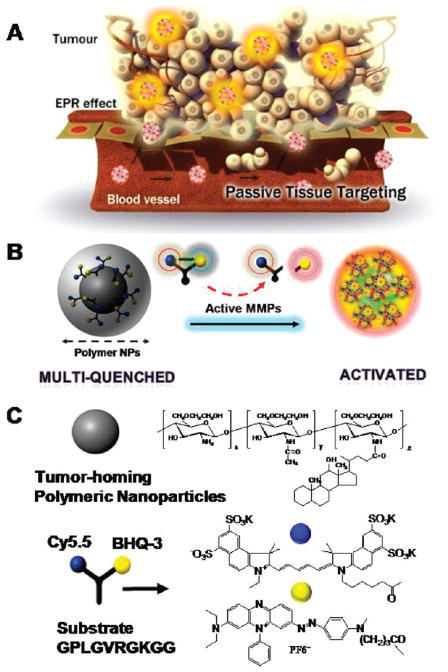Figure 1.
(A) Schematic diagram of the MMP-sensitive NS. Nanoparticles can deliver multiquenched fluorogenic peptide efficiently to the target site by the EPR effect. When MMPs meet the NS at the site of disease, cleavage of the fluorogenic peptide occurs owing to specific substrate recognition by the MMPs, manifest in the form of pronounced NIR fluorescence signal recovery due to dequenching of the dye. (B) MMP-sensitive NS. Because of the efficient NIR fluorescence quenching ability of the quencher (BHQ-3) and self-quenching of the Cy5.5 dye itself, fluorogenic peptides that are chemically conjugated on the surface of nanoparticles are in the strongly multiquenched state. After cleavage of the substrate by MMPs, NIR fluorescence dyes are released from nanoparticles and fluoresce brightly. (C) Chemical structures of polymeric nanoparticles and MMP-sensitive fluorogenic peptide.

